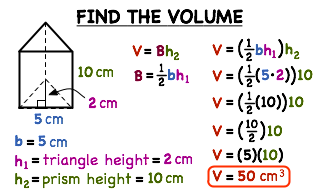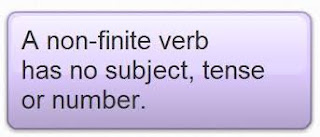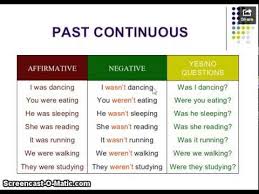
I teach Maths, English Grammar and Spoken English efficiently. My wish is to teach the children of all countries online. My classes will be interactive and interesting. I render assignment help and proof reading through e-mail learning and whatsapp learning. skype id: selviraveendran mail id : onlinetutorselviraveendran@gmail.com Whatsapp No: 9442624629
Popular Posts
-
SENTENCE PATTERNS WITH EXAMPLES Subject (S) Verb (V) Object (O) Complement (C) Adverbial (A) Direct Object (DO) Indirect...
-
Sentence Pattern - Exercise Identify the pattern of the following sentence : 1.She / will come a) SV b) SVO c) SVC d) SVO...
-
7 Basic Sentence Patterns The English language has seven basic sentence (or clause) patterns. Examples are: John / laughed. (SV)*...
-
Sentence Pattern: What is sentence pattern? Systematic arrangement of words in a sentence meaningfully is sentence pattern...
-
TYPES OF SENTENCES In writing and speaking, there are four basic types of sentences that we use for different purposes: declarati...
-
FINITE AND NON-FINITE VERBS Identify the finite and non-finite verbs in the following sentences. 1. My little brother wants to be ...
-
PHRASES WORKSHEET Identify the phrases in the following sentences and state their kind 1. He was a man of great wealth. 2. Th...
-
English Grammar Worksheets Free PDF ebook Download from Larisa School of Language Nikolaev Ukraine over One Hundred Pages from Laris...
Wednesday, February 24, 2016
Monday, February 22, 2016
NON-FINITES EXERCISE
NON-FINITES EXERCISE
Rewrite the following sentences by changing the participle into a finite verb
1. Having learnt his lesson, he went out to play cricket.
2. Walking along the street one day, I saw a dead cobra.
3. Leaving the forest we advanced into the open plain.
4. Driven out of his country, he sought asylum in a foreign land.
5. It being a very hot day, I remained in my tent.
6. A gipsy, wandering across the meadows, found the child.
7. I once saw a man walking on a rope.
8. Not knowing my way, I asked a policeman.
9. Hearing the noise, I woke up.
10. Being paralytic, he could not walk.
Answers
1. After he learnt his lesson, he went out to play cricket.
2. While I was walking along the street one day, I saw a dead cobra.
3. We left the forest and advanced into the open plain.
4. As he was driven out of his country, he sought asylum in a foreign land.
5. As it was a very hot day, I remained in my tent.
6. A gipsy found the child while he was wandering across the meadows.
7. I once saw a man who was walking on a rope.
8. As I did not know my way, I asked a policeman.
9. When I heard the noise, I woke up.
10. As he was paralytic, he could not walk.
Saturday, February 20, 2016
DIFFERENTIATION OF EXPONENTIAL FUNCTIONS
DERIVATIVE OF THE EXPONENTIAL FUNCTION
The derivative of ex is quite
remarkable. The expression for the derivative is the same as the expression
that we started with; that is, ex!
It means
the slope is the same as the function value (the y-value) for all points on the
graph.
Example: Let's
take the example when x = 2. At this point, the y-value is e2 ≈ 7.39.Since the derivative of ex is ex, then the slope of the tangent line at x = 2 is also e2 ≈ 7.39.
We can see that it is true on the graph:
Let's now see if it is true at some other values of x.
We can see that at x = 4, the y-value is 54.6 and the slope of the tangent (in red) is also 54.6.
At x = 5, the y-value is 148.4, as is the value of the derivative and the slope of the tangent (in green).
DIFFERENTIATION OF EXPONENTIAL FUNCTIONS
|
Solve the following problem
Differentiate y=e^(ax+b)
where a and b are constants
Let u = ax + b and y = e ^u
Use the chain rule to
find the derivative of function as follows
dy/dx = (dy / du) (du /
dx)
dy / du = e ^u and du / dx = a ( Since the derivative
of the constant b is 0)
Hence dy/dx = (e ^u)(a) = a e ^u
Hence dy/dx = (e ^u)(a) = a e ^u
Substitute u = ax + b in dy/dx above
dy/dx = a e ^ax + b
dy/dx = a e ^ax + b
VOLUME OF A TRIANGULAR PRISM

www.VirtualNerd.com
SUMMARY
- B stands for the area of the base
- Since our bases are triangles, we can use (1/2)bh for B
- We can call the height of the triangle h1 and the height of the prism h2 to avoid confusion
- Volume is measured in units cubed, so we have 50 cm3

NOTES

- The volume of a prism is V=Bh
- B is the area of the base of the prism
- h is the height of the prism
- The base of our prism is a triangle, so we can use (1/2)bh, the area of a triangle, for B
- We can call the height of the triangle h1 and the height of the prism h2 to avoid confusion

- V is the volume, which is what we are trying to find
- b is the base of the triangle, which is 5 cm
- h1 is the height of the triangle, which is 2 cm
- h2 is the height of the prism, which is 10 cm

- We can plug 5 in for 'b', 2 in for 'h1', and 10 in for 'h2' in our equation

- We need to use the order of operations to simplify the right hand side
- First multiply 5•2 in the innermost parentheses
- Then multiply (1/2)•10 within the next set of parentheses
- This is the same as 10/2, or 5
- Then multiply 5•10 to get 50 cm3
Friday, February 19, 2016
MATHS IS BETTER IN COLOUR

Maths is better in colour. Level Up your skills with this channel. -->https://t.co/B5AD6XVjcO #maths #tutor pic.twitter.com/QaIBog1w4z
— Maths From Scratch (@MathsfrmScratch) February 16, 2016
Monday, February 15, 2016
INTRANSITIVE VERBS AS TRANSITIVE VERBS
INTRANSITIVE VERBS AS TRANSITIVE VERBS
When an
intransitive verb is used in a causative sense, it becomes transitive.
Study the
examples given below.
The horse walks.
(Intransitive)
The man walks the
horse. (Transitive – here the man causes the horse to walk.)
Birds fly.
(Intransitive)
The boys fly their
kites. (Transitive)
The
spellings of certain common verbs indicate whether they are transitive or
intransitive.
Many trees fell in
the storm. (Intransitive)
Woodcutters felled the
trees. (Transitive)
Lie still.
(Intransitive)
Lay the
basket on the table. (Transitive)
Rise early
with the lark. (Intransitive)
Raise your
hands. (= Cause your hands to rise.)
Sit here.
Set the
lamp on the table.
Some
intransitive verbs become transitive when a preposition is added to them.
His friends laughed
at him. (Laugh is an intransitive verb and does not take any object.
Laugh at is a transitive verb and takes the object ‘him’.)
He soon ran
through his fortune. (The verb run is intransitive whereas run through
is transitive. To run through one’s fortune is to use it rapidly.)
Please look
into the matter carefully.
I wish
for nothing.
Sometimes
the preposition is prefixed to the verb.
He overcame his
enemy. (Come is an intransitive verb, but overcome is transitive.)
He bravely withstood the
attack. (Stand is an intransitive verb, but withstand is transitive.)
Thursday, February 11, 2016
PAST CONTINUOUS TENSE WORKSHEET
PAST CONTINUOUS TENSE WORKSHEET
MAKE SENTENCES IN THE PAST
CONTINUOUS TENSE USING THE VERB GIVEN IN THE BRACKETS.
Wednesday, February 10, 2016
Tuesday, February 9, 2016
COMPARISON EXERCISE
COMPARISON
EXERCISE
1.
The elephant is ……………………. land animal.
a)
the big
b) the bigger
c) the biggest
b) the bigger
c) the biggest
2.
The cheetah is …………………….. animal.
a)
the fast
b) the faster
c) the fastest
b) the faster
c) the fastest
3.
The tortoise has a ………………. lifespan than any other animal.
a)
long
b) longer
c) longest
b) longer
c) longest
4.
Mt. Everest is ………………… peak in the world.
a)
the high
b) the higher
c) the highest
b) the higher
c) the highest
5.
Asia is …………………… than Africa.
a)
big
b) bigger
c) biggest
b) bigger
c) biggest
6.
China has ………………… population in the world.
a)
large
b) the largest
c) the larger
b) the largest
c) the larger
7.
One gram is …………………. than a kilo.
a)
light
b) lighter
c) lightest
b) lighter
c) lightest
8.
The Nile is ……………….. than any other river.
a)
long
b) longer
c) longest
b) longer
c) longest
9.
Greenland is …………….. island.
a)
the large
b) the larger
c) the largest
b) the larger
c) the largest
ANSWERS
1.
The elephant is the biggest land animal.
2.
The cheetah is the fastest animal.
3.
The tortoise has a longer lifespan than any other animal.
4.
Mt. Everest is the highest peak in the world.
5.
Asia is larger than Africa.
6.
China has the largest population in the world.
7.
One gram is lighter than a kilo.
8.
The Nile is longer than any other river.
9.
Greenland is the largest island.
COMBINE THE FOLLOWING SENTENCES
COMBINE THE
FOLLOWING SENTENCES
1.
They caught the thief. They handed him over to the police. (Use having)
2.
The thief heard a noise. He ran away. (Use hearing)
3.
He is very fat. He cannot walk fast. (Use too)
4.
She was very tired. She could not stand up. (Use so that)
5.
She left home at 4. She hasn’t arrived yet. (Use although)
6.
The tortoise was slow. He beat the hare in the race. (Use though)
7.
You will not be able to meet him. You have to be there before 3 pm. (Use unless
or if)
8.
You may work very hard. Still you cannot please him. (Use however)
9.
He is ill. He attends office regularly. (Use in spite of)
10.
I bought some apples yesterday. They were good. (Use which)
Answers
1. Having caught the thief, they handed him over to the
police.
2. Hearing a noise, the thief ran away.
3.
He is too fat to walk fast.
4.
She was so tired that she could not stand up.
5. Although she left home at 4, she hasn’t arrived
yet.
6. Though the tortoise was slow, he beat the
hare in the race.
7. Unless you reach there before 3 pm, you will
not be able to meet him. / If you do not reach there before 3 pm,
you will not be able to meet him.
8. However hard you may work, you cannot please
him.
9. In spite of his illness, he attends office
regularly.
10.
The apples that I bought yesterday were good.
DIRECT TO INDIRECT SPEECH: GENERAL RULES
DIRECT TO
INDIRECT SPEECH: GENERAL RULES
Direct
speech: The boy said, ‘I’m happy with my results.’
Indirect speech: The boy said that he was happy with his results.
Indirect speech: The boy said that he was happy with his results.
General rules for
changing direct speech into indirect speech
Omit
all inverted commas or quotation marks. End the sentence with a full stop.
If
the verb inside the inverted commas/quotation marks is in the present tense,
change it into the corresponding past tense. If it is in the simple past tense,
change it into the past perfect tense.
Direct
speech: The girl said, ‘I like singing.’
Indirect speech: The girl said that she liked singing.
Indirect speech: The girl said that she liked singing.
Direct
speech: Rahul said, ‘I will have to reach home by 8.30.’
Indirect speech: Rahul said that he would have to reach home by 8.30.
Indirect speech: Rahul said that he would have to reach home by 8.30.
Direct
speech: Alina said, ‘I met James yesterday.’
Indirect speech: Alina said that she had met James yesterday.
Indirect speech: Alina said that she had met James yesterday.
When
the verb inside the quotation marks expresses a universal truth, we do not
normally change it into the past tense.
He
said, ‘All people have equal rights.’
He said that all people have equal rights. (More natural than ‘He said that all people had equal rights.’)
He said that all people have equal rights. (More natural than ‘He said that all people had equal rights.’)
Use
pronouns appropriately.
Study
the examples given below.
Direct
speech: The boy told the girl, ‘I told you that
we were not going
on a holiday.’
Indirect speech: The boy told the girl that he had told her that theywere not going on a holiday.
Indirect speech: The boy told the girl that he had told her that theywere not going on a holiday.
Notes
When
the reporting verb is in a present or future tense, we do not change the tense
of the verb inside the quotation marks.
Direct
speech: She says, ‘I will come.’
Indirect speech: She says that she will come.
Indirect speech: She says that she will come.
Subscribe to:
Comments (Atom)

















